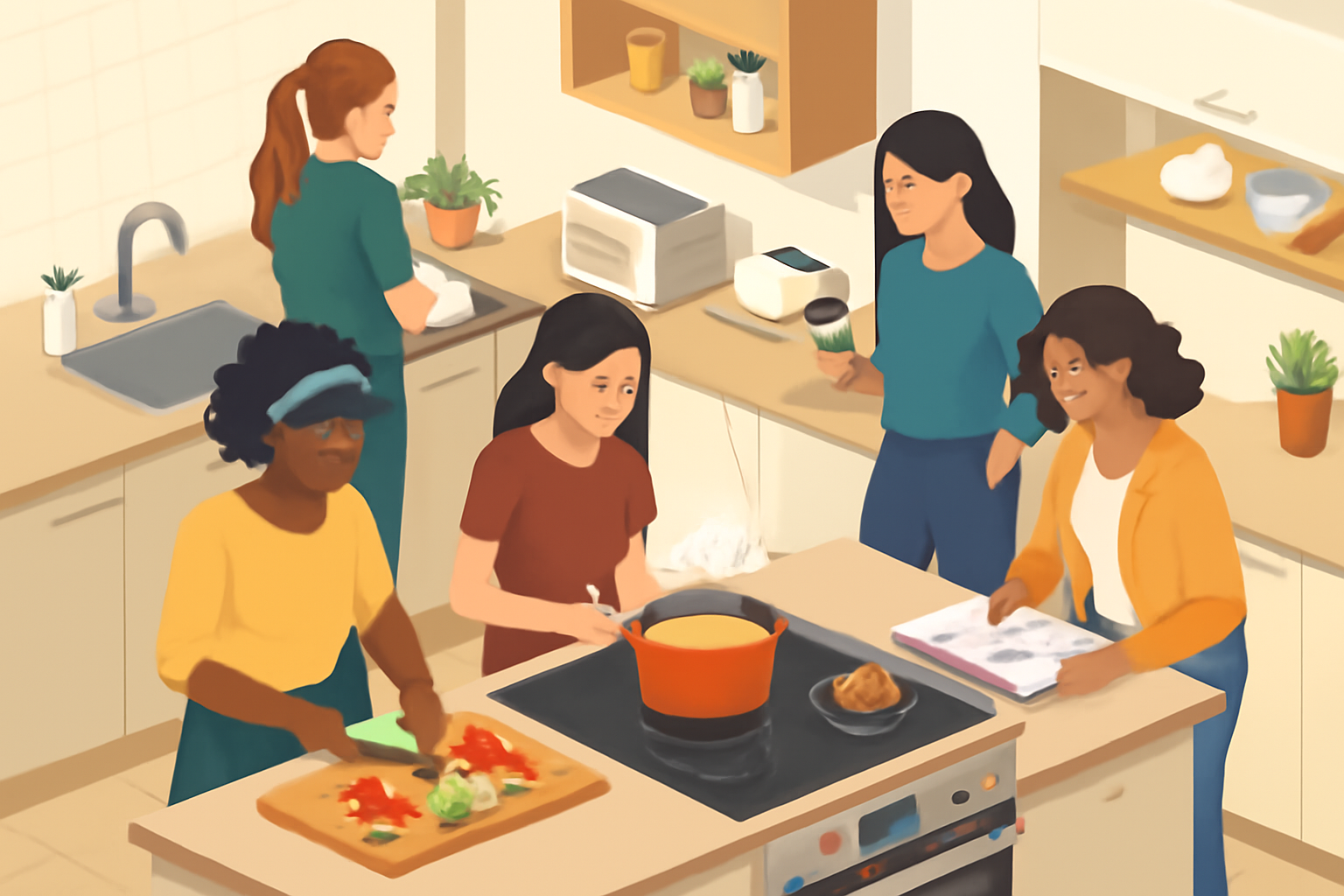
Home Cooking as Unpaid Labor: The Invisible Second Shift
In many societies, home cooking represents an essential aspect of daily life, a task traditionally consigned to women. Despite the increase in women's participation in the workforce, the division of labor within the home has remained relatively unchanged, with cooking often being an "invisible" and unrecognized form of labor. This phenomenon is commonly referred to as the "second shift," where women, after completing their professional workday, undertake household responsibilities without compensation or adequate recognition.
The Historical Context
Throughout history, cooking has been a pillar of domestic life, deeply intertwined with gender roles. From the domestic goddesses of the 1950s portrayed in media to contemporary conversations about work-life balance, women's roles in the kitchen have often been seen through the lens of domesticity and care, rather than labor. This historical backdrop has contributed to a cultural norm where cooking remains largely undervalued.
The Economic Impact
According to studies, if home cooking were compensated at fair market rates, it would significantly contribute to the GDP. For instance, a report by Oxfam International suggests that the economic value of women's unpaid care work globally is at least $10.8 trillion annually. When cooking is seen as an unpaid activity, its economic impact becomes obscured, contributing to gender wage gaps and financial inequality.
The Psychological and Emotional Toll
The second shift is not purely a physical burden but also a mental and emotional one. Women often experience guilt and pressure to meet societal expectations of being both a provider and a caretaker. This dual responsibility can lead to stress, burnout, and an imbalance in work-life dynamics, affecting both their personal and professional roles.
Solutions and Shifts in Perspective
Valuing Domestic Work: Recognizing home cooking as legitimate labor is crucial for redefining gender roles in domestic spaces. This includes advocating for policies that support shared parental leave and equal distribution of household duties.
Cultural Change: It is necessary to challenge and redefine cultural narratives that tie cooking exclusively to women's identities. Promoting shared responsibilities can help in reducing the pressures of the second shift.
Workplace Policies: Implementing flexible work arrangements can support a more equitable division of labor at home, allowing both partners to engage in cooking and other household tasks.
Education and Awareness: Programs aimed at educating both men and women about the value of domestic work and its impact on economic and personal well-being can drive systemic change.
By acknowledging and addressing home cooking as an unpaid labor form, society can take essential steps towards achieving gender equality and ensuring that women's contributions, both at home and in the workforce, are fully appreciated and rewarded.